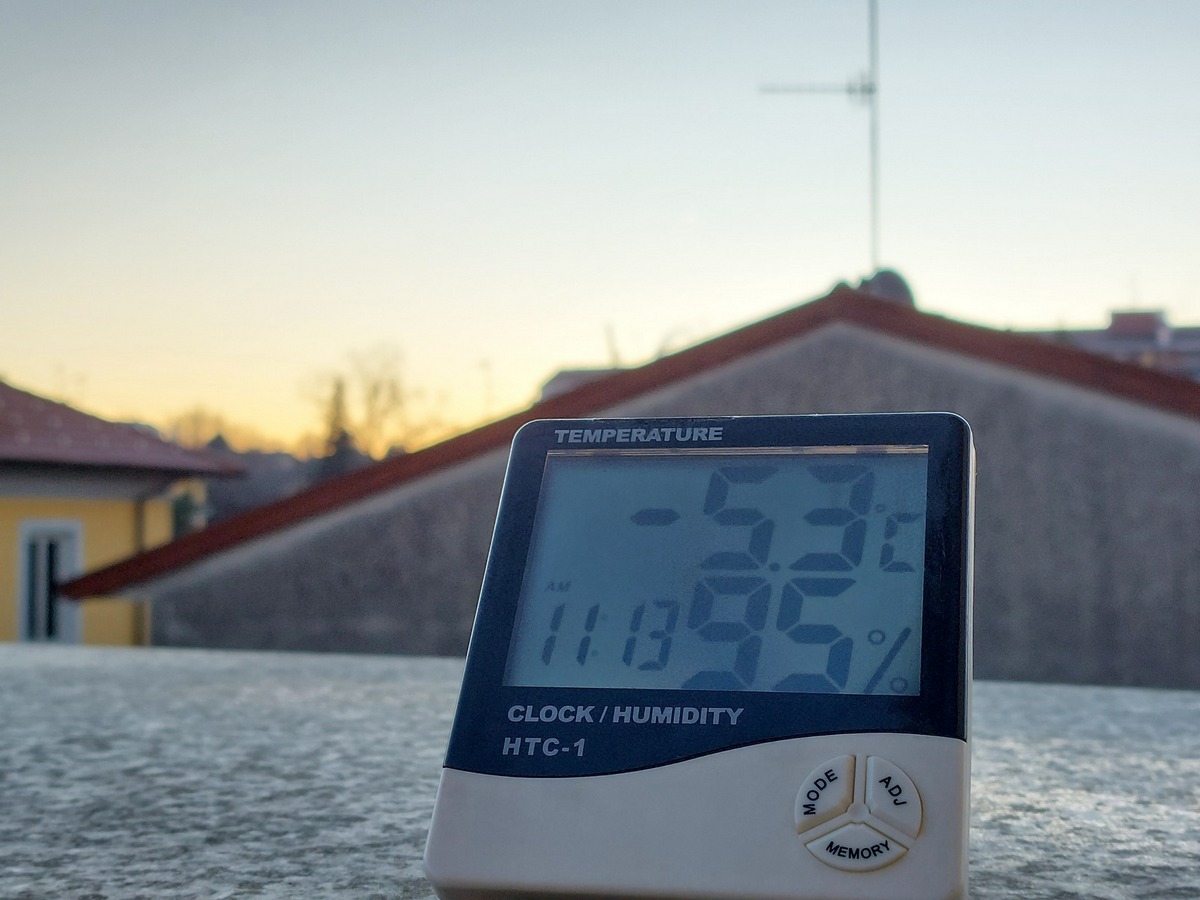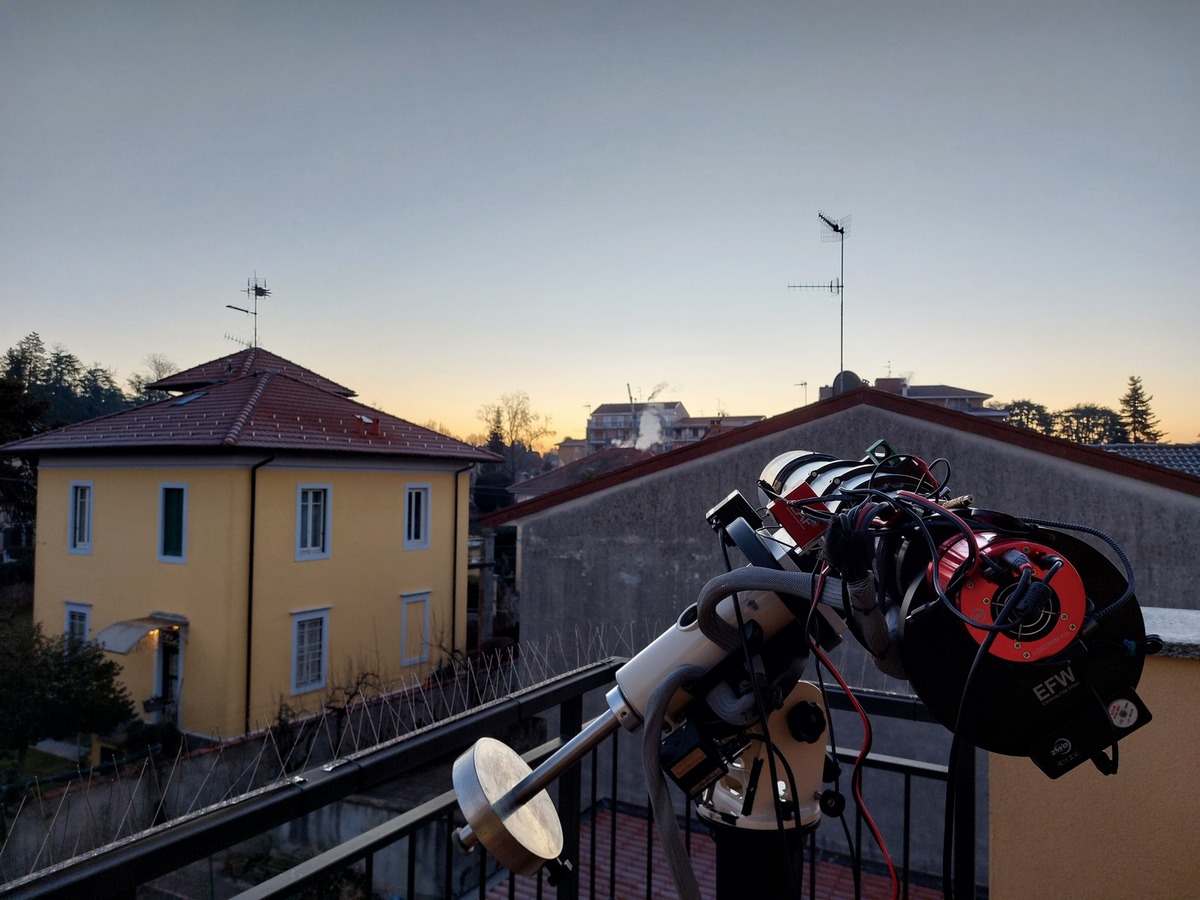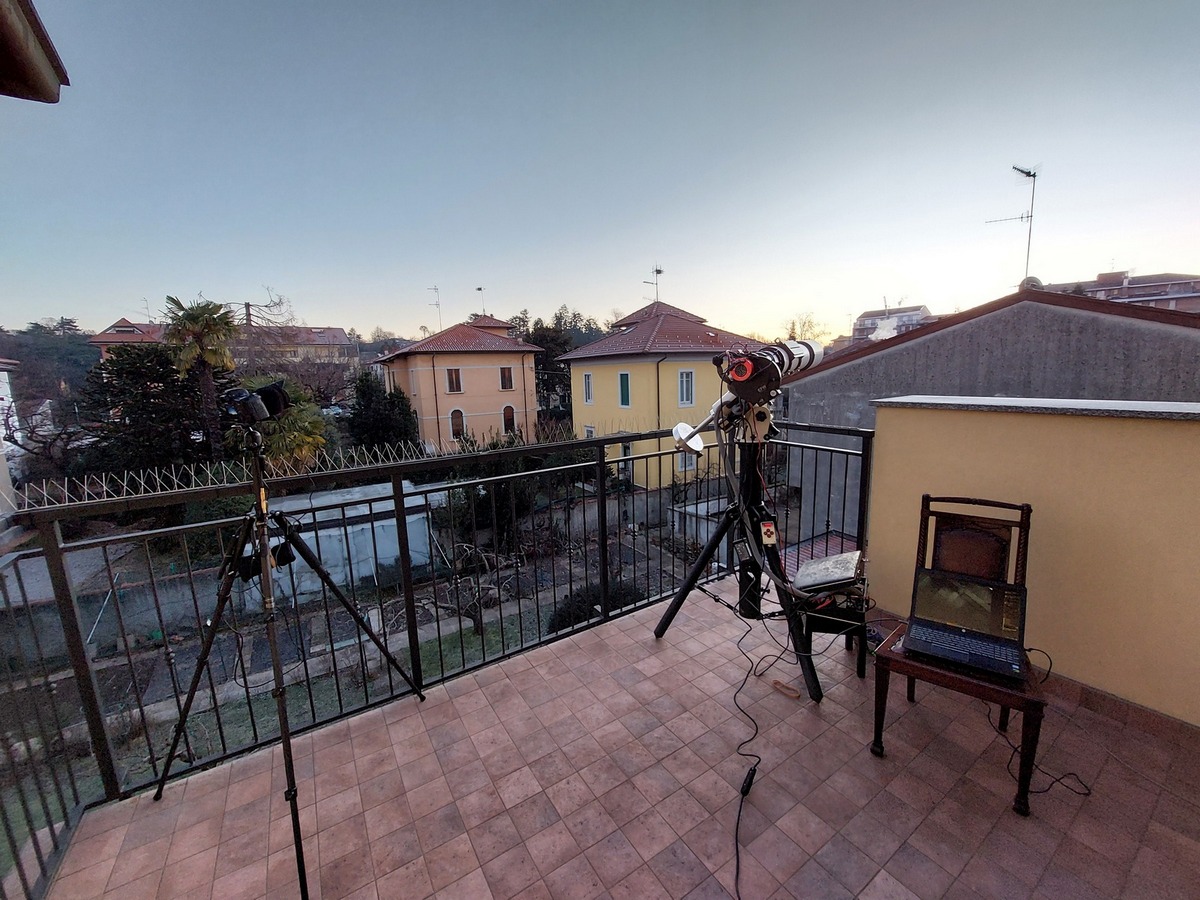Comet Atlas G3 was my first comet to be observed in
full daylight, at midday, at 6° from the Sun. It was a
real surprise. On 12 Jan 2025 at 11.54 UT (12.54 local time) I
pointed the telescope to the Sun using an Astrosolar filter.
After synching the mount, I swifted to the comet's coordinates
6° from the Sun, removed the solar filter and - WOW- the
comet was visible with a small tail right in the fild center!
I used a TEC 140 apo refractor on a Gemini G41 mount with FS2
drive and a ZWO ASI6200MM camera. Exposure of 5 ms with R
filter, average of 1000 frames.
I also tried to image the comet at sunrise the next day, 13 Jan 2025 7.25 UT. However due to my horizon and to the comet at only 5° elongation from Sun, I imaged the comet when the Sun was already rised and was at 3° above horizon, even if hidden by far buildings. The resulting image was nearly the same as the midday imagin of the day before. Similar exposure time of 1 ms with L filter because of the bright sky.
I was very lucky also to have my daylight image published on Spaceweather homepage on 13 Jan 2025, see screenshot below.
I also tried to image the comet at sunrise the next day, 13 Jan 2025 7.25 UT. However due to my horizon and to the comet at only 5° elongation from Sun, I imaged the comet when the Sun was already rised and was at 3° above horizon, even if hidden by far buildings. The resulting image was nearly the same as the midday imagin of the day before. Similar exposure time of 1 ms with L filter because of the bright sky.
I was very lucky also to have my daylight image published on Spaceweather homepage on 13 Jan 2025, see screenshot below.
12 January 2025
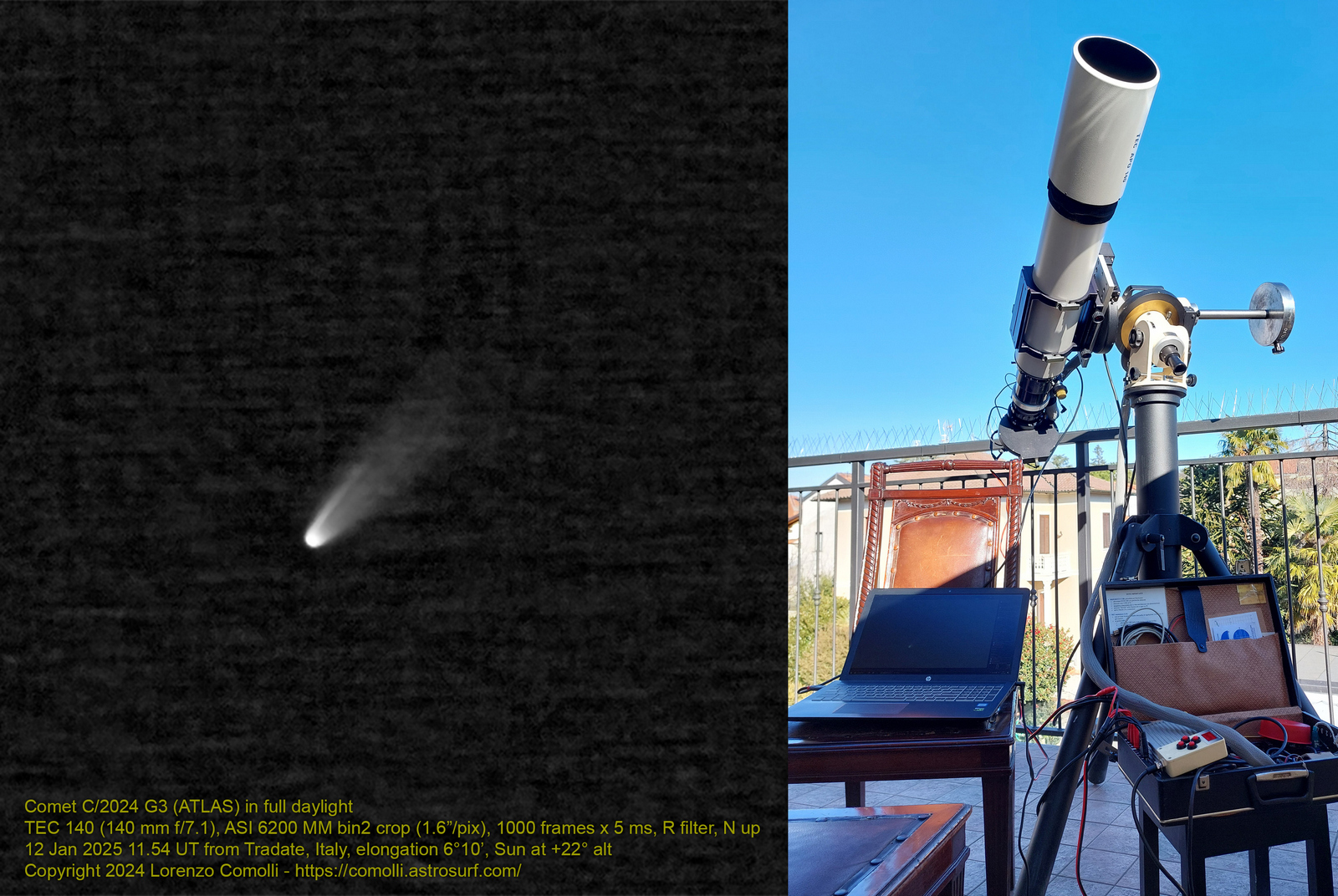
|
|
|
| Optics | TEC
140 |
| Focal
Length |
1011
mm |
| Focal Ratio | f/7.2 |
| Exposure Time | 1000 x
5 ms R filter at 10.3 fps with ROI
1600x1200 pix |
| CCD | ASI
6200 MM used in software binning 2x2 |
| Chip temperature |
-10°C |
| Location | Tradate, VA, Italy, at 305 m height |
| Date |
12
January 2025 h11.54 UT |
| Mount | Gemini
G41 |
| Temperature and humidity | T=~5°C,
RH=~50% |
| Notes | See
description at the top of the page. |
13 January 2025
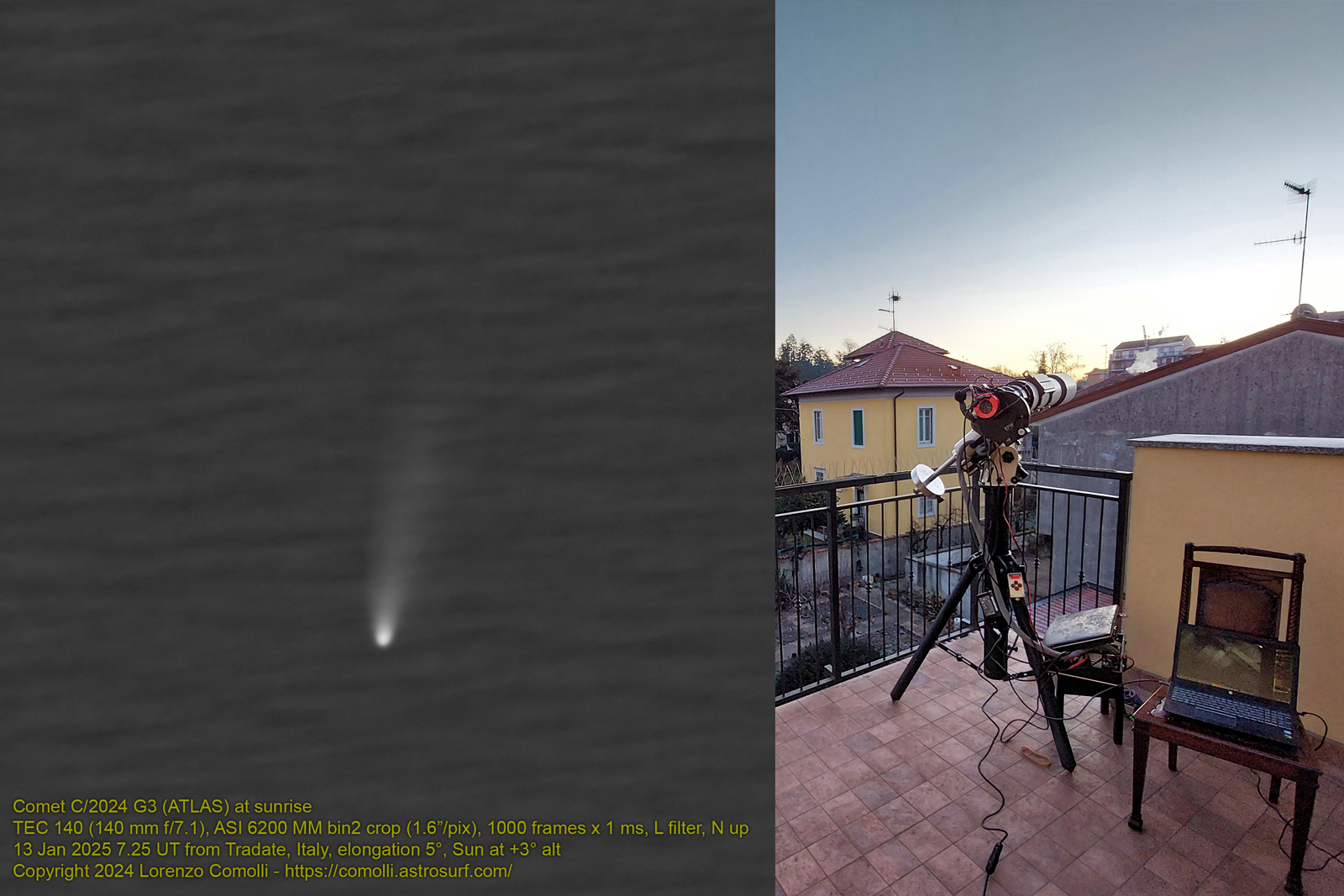
|
|
|
| Optics | TEC
140 |
| Focal
Length |
1011
mm |
| Focal Ratio | f/7.2 |
| Exposure Time | 1000 x
1 ms L filter at 8 fps with ROI
2392x1596 pix |
| CCD | ASI
6200 MM used in software binning 2x2 |
| Chip temperature |
-20°C |
| Location | Tradate, VA, Italy, at 305 m height |
| Date |
13
January 2025 h7.25 UT |
| Mount | Gemini
G41 |
| Temperature and humidity | T=-5°C,
RH=95% |
| Notes | See
description at the top of the page. |
Spaveweather screenshot
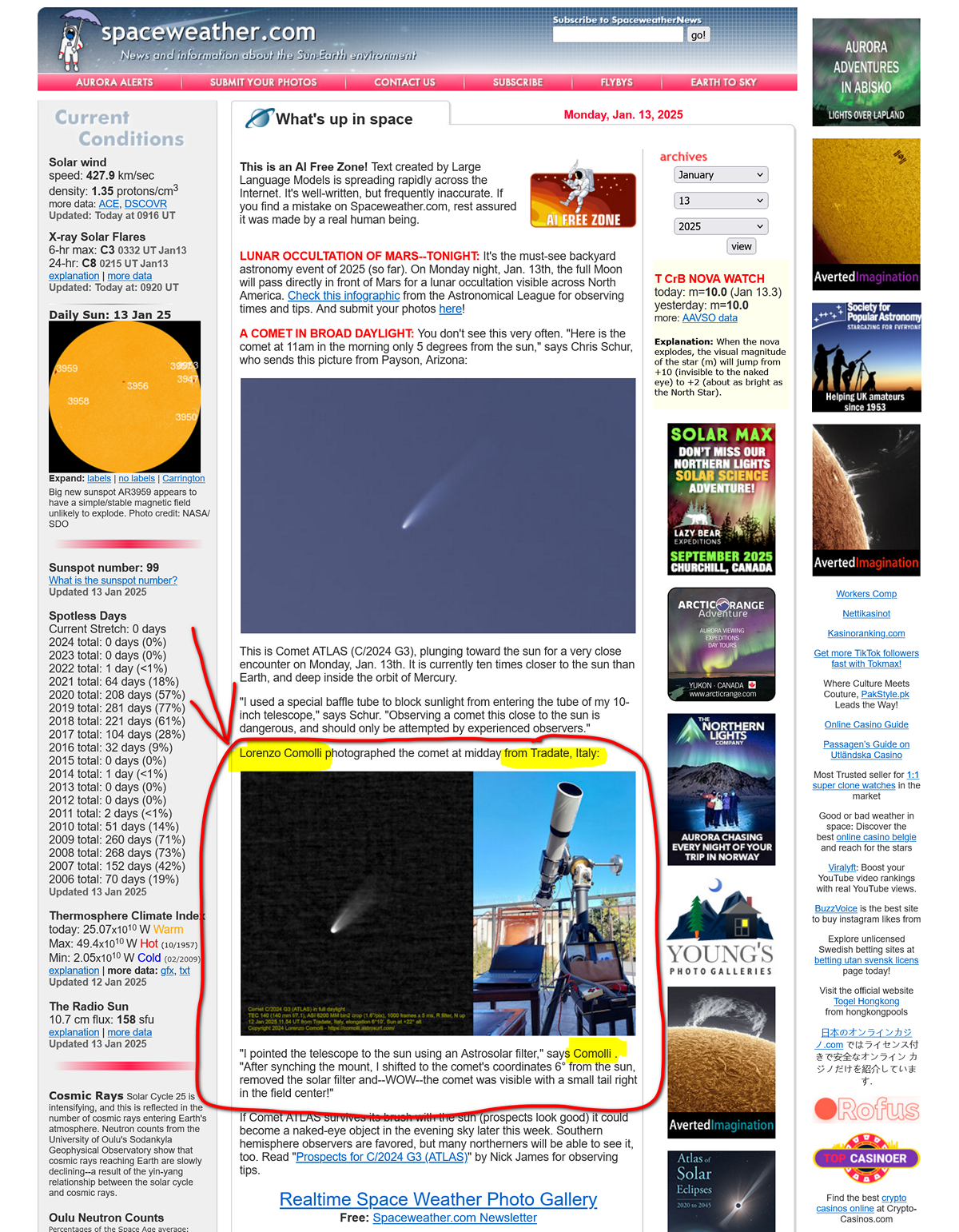
Setup images
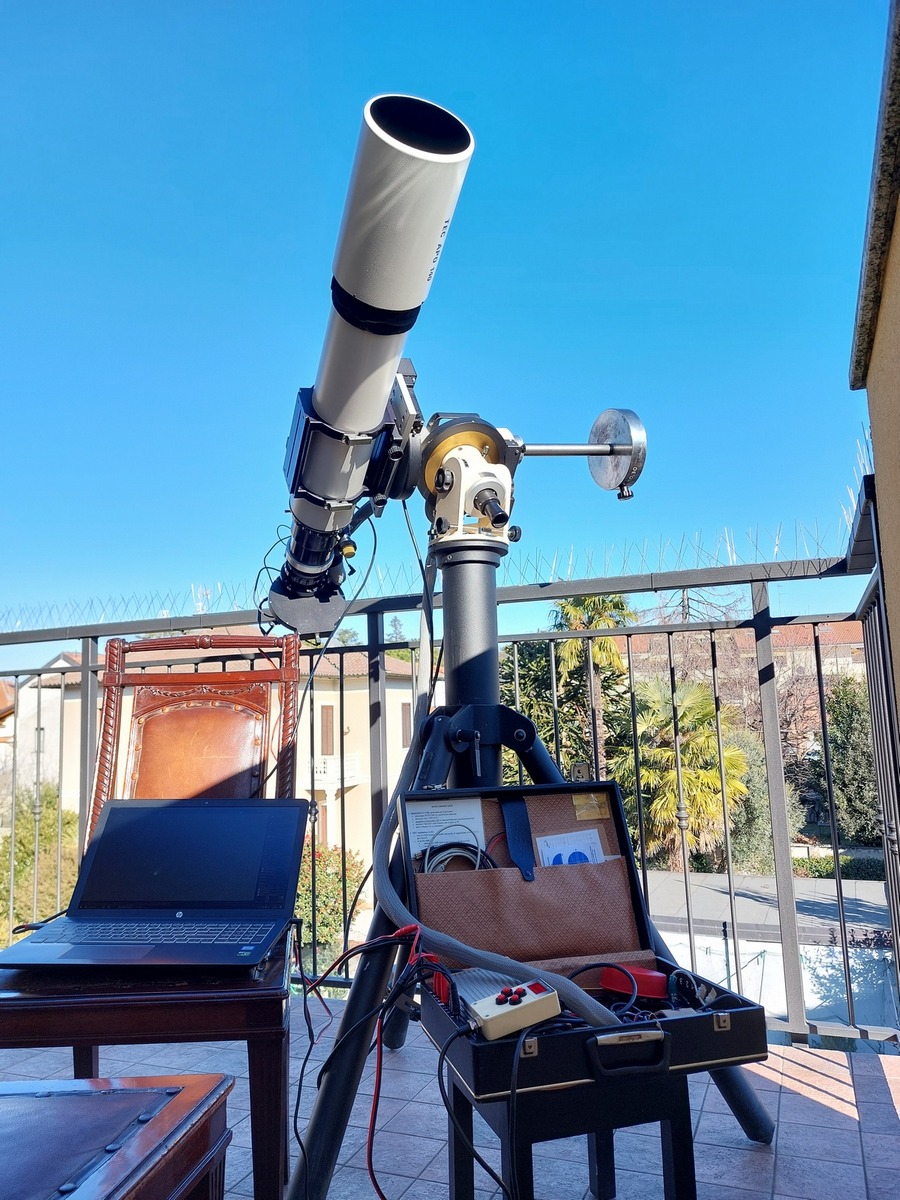
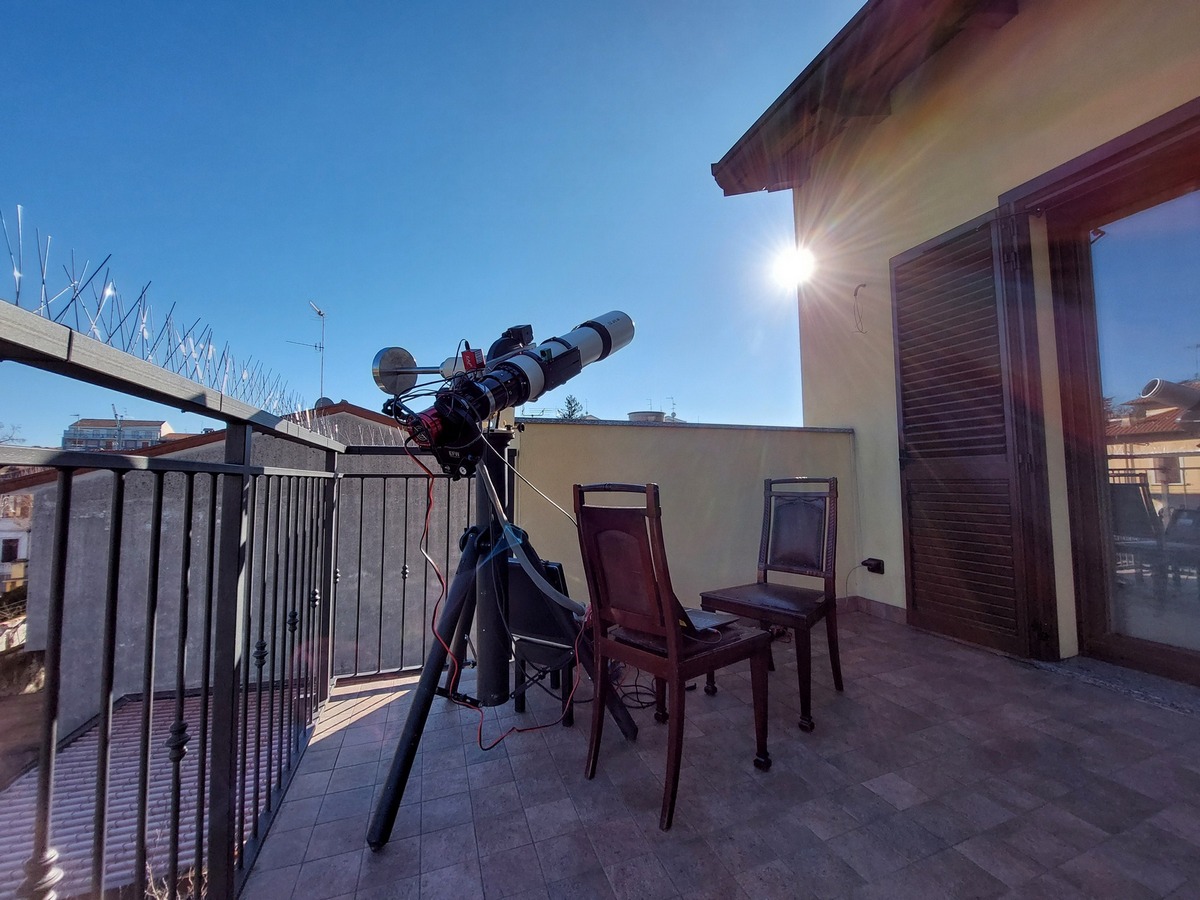
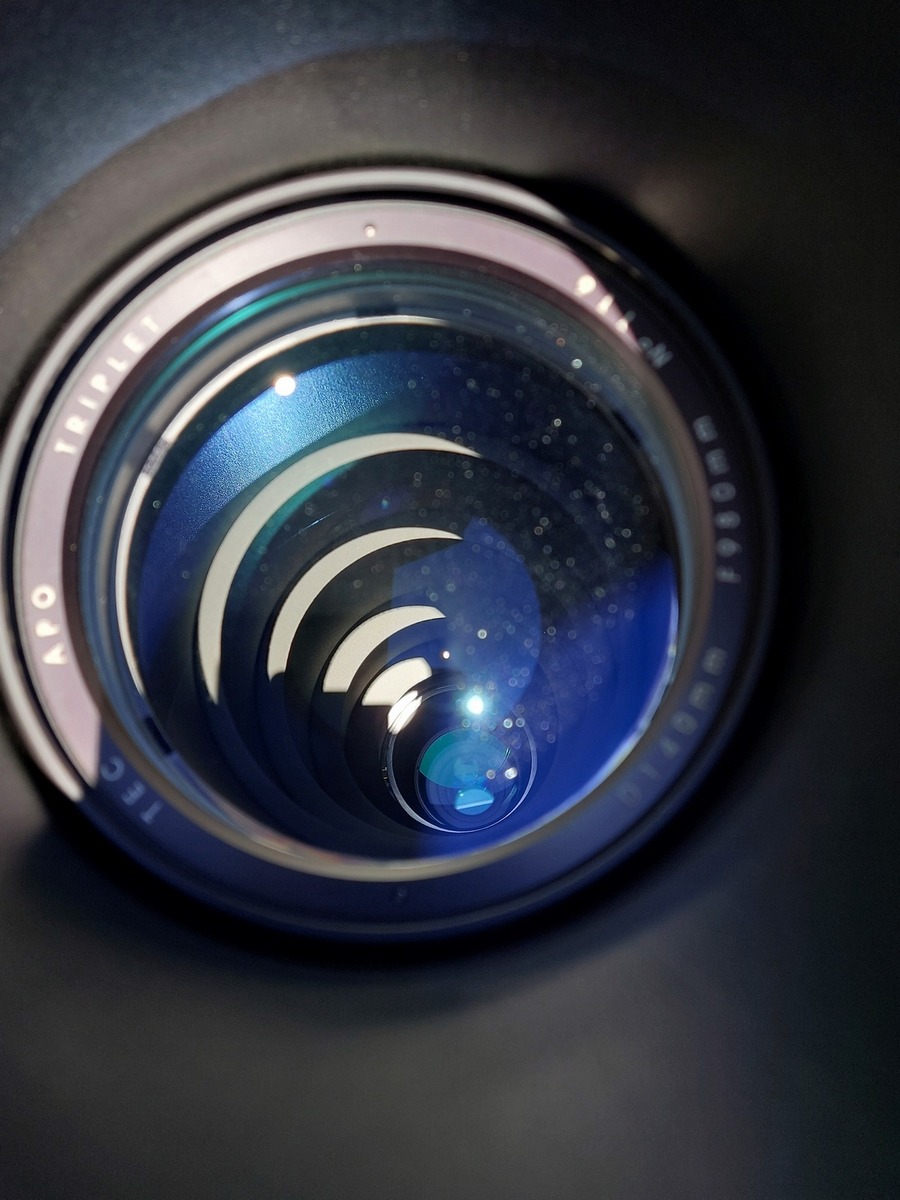
The Sun at 6° was blocked by the internal diaphragms of TEC 140. The very cold weather of mid January prevented overheating of the tube.
